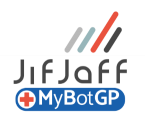JifJaff Nine Pillars of Automation – Pillar Six – Guided RPA Training
Over the coming series we will discuss how the “JifJaff Nine Pillars of Automation” facilitates successful Internal Robotic Process Automation (RPA) delivery through an internal Centre of Excellence (COE). This article is focused on Pillar Six – Guided RPA Training.
JifJaff is a specialist in building client RPA COE’s through the building blocks of the “Nine Pillars of Automation”. Internal automation delivery is the long-term strategic approach to ensure RPA is embedded into the organisation, and automation ingrained into the culture of the organisation.
Robotic Process Automation is a virtual workforce multiplier of your existing human workforce. By utilising RPA software, enterprises can significantly increase productivity, without increasing spend on recruiting or training of new hires. RPA automation is built to handle tasks that are slowing down employees or are just very boring to do. The RPA bots follow structured business rules.
Automation is driving a new way of working. The future workplace will feature a blend of human and digital workforce, also known as software robots, or bots. This symbiotic relationship is expected to create many exciting, new career possibilities.
Businesses will still need humans for tasks that require applying specialised expertise, interacting with, or managing people, and unpredictable physical effort. There is already a need for employees skilled in RPA within many businesses today, such as robotics, automation management, analytics, AI, cloud services, cyber security, and more.
Being enrolled within Robotics Process Automation training does not require a degree in any specialisation. It also does not require any set of additional skills. Having the interest in robotics alone and a strong desire to become the skilled RPA professional alone is just enough.
Pillar Six is the logical “next step” once the pre-requisites pillars are in place i.e. Target Operating, RPA Team Structure (COE Roles & Responsibilities), Standardised RPA Documentation & RPA Process Ranking Criteria.
Guided RPA Training Pillar provides advice and guidance on the correct selection of RPA courses to accelerate Automation build whilst conforming to Industry Best Practise guidelines. Its crucial to consider all aspects of Automation delivery to ensure all moving parts are coordinated and optimised to provide in-depth practical, conceptual, and theoretical coverage to allow developers, business analysts, architects and infrastructure teams to implement best practise RPA principles. Some of the key “RPA Best Practise Principles” will be discussed.
Build from RPA Frameworks.
Successful automation originates from good design and this is underpinned by the documentation which must capture the process at both the workflow and keystroke level. Building through a “Technical Framework”, ensures processes build is standardised and follows standard build governance principles.
Break down processes into specific sub workflows.
When building an automation workflow, each separate task (or series of steps) should have its own dedicated sub-workflow. This enables independent testing of components and allows multiple developers to work on a single process.
Create configurable files.
Automations should allow process owners to make changes to automation variables without developer intervention. By putting change-prone settings inside a configurable file, the developer gives the process owner the flexibility to change these values as desired.
Store reusable components.
Many processes share common steps, such as logins, emails, and data validation. These common workflows should be sharable between automations.
Workflow Logs.
Logs are time-stamped files that contain informational events, error alerts, and warning messages relevant to the automation. The developer should add logging steps to workflows intermittently to help document and provide audit information of the steps executed by the Bot.
Build in error handling.
Exceptions like a timed-out application, bad data, or a new screen within the application also can stall an automation. Therefore workflows should contain error handling.
RPA Patches & Upgrades.
System patches and upgrades should be managed and implemented through a 3-tier environment i.e. Development, Test & Production environment. A 3-tier framework allows upgrades & patches to be tested within Dev/Test environments before they are released to Production (live) and thereby eliminate risk to business-as-usual Bot processes.
Provide full Audits & Monitor of Bot activities.
The RPA COE team must have a mechanism of capturing details on every Robot, Process step, User action as part of the of the automated end to end process.
Robot Heartbeat Monitoring.
This ensures robots are either healthy and performing or alerts are raised. Active robots in good operational health send a constant “heartbeat” to the server. Lack of heartbeats or substandard performance is monitored and alerts and raised when failures occur.
Intelligent Scheduling – Robot Process Optimisation.
Optimises robot productivity by managing availability against demand and importance. At full capacity, robots are assigned to outstanding priorities as they complete work; if SLA’s are threatened, low priority work is queued until capacity returns.
As highlighted above, RPA training must be comprehensive to cover all components required for successful Automation delivery, right through from building out automation workflows, technical architecture, hyper-care with governance, accountability and escalation paths embedded within the RPA COE team.
